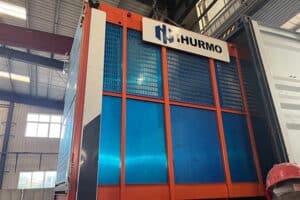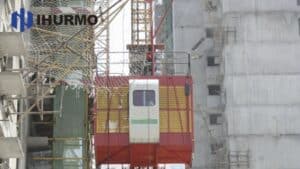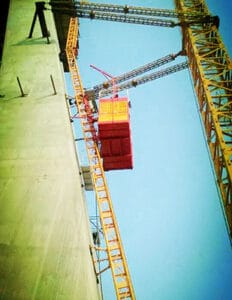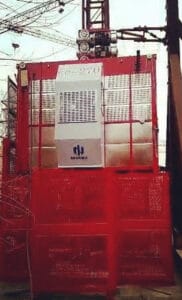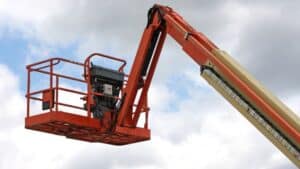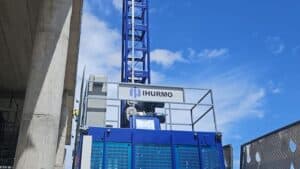Routine inspections are vital to ensure the safe operation of hoists. You’ll learn why these checks are necessary and get acquainted with the hoists you may encounter.
Why You Need to Do Routine Inspections?
The primary reason for routine hoist inspections is to guarantee the safety of all personnel involved. Hoists bear significant loads, and any malfunction can lead to accidents and resulting in injuries.
Unexpected hoist failures can lead to significant downtime, disrupting workflows and delaying projects. Routine inspections allow for the early detection of wear and tear or minor defects that can be addressed promptly.
Regular maintenance and inspections contribute to the longevity of your hoist equipment. By addressing issues as they arise and keeping the hoist components in good condition, you can prevent premature wear and tear.
Furthermore, maintaining detailed records of routine inspections fosters accountability and transparency within your organization. These records provide a history of maintenance activities, making it easier to track the condition of your hoists over time. In the event of an audit or investigation, comprehensive records demonstrate your commitment to safety and regulatory compliance.
What do you need to do?
Here’s what you need to focus on:
- Pre-Operational Inspections: These are done before you start using the hoist each time. Check for any obvious signs of wear, damage, and proper operation. This means ensuring the controls are correctly marked and respond as intended.
- Periodic Inspections: Depending on how often you use the hoist and the environment in which it’s used, more thorough inspections may be required at different intervals. For these, detail is key. You might even need to take the hoist apart to make sure everything inside is in good working order.
How to do a Construction Hoist Inspection?
Examining the Mast Structure
The mast is the backbone of your construction hoist, providing stability and support. A thorough inspection is critical:
- Mast Sections: Scrutinize each mast section for any signs of damage, such as bends, buckling, rust, or corrosion. Look for any missing bolts or other connection hardware.
- Connections: Verify that all mast connections are tight and secure. Pay particular attention to the base section and its anchoring to the building or foundation. Check for proper alignment and plumpness of the mast.
Platform and Enclosure Inspection
The platform carries personnel and materials, so its integrity is paramount:
- Structure: Check the platform floor and railings for damage. Ensure welds are sound and there are no cracks or deformations.
- Gates: Verify that platform gates operate smoothly and latch securely. Check for proper functioning of interlocks, which prevent hoist operation when gates are open.
- Enclosure: Examine the platform enclosure panels for damage or deterioration. Ensure they are securely attached and provide adequate protection from falling objects.
Mechanical and Electrical Components
These systems power and control the hoist, requiring careful attention:
- Motor: Listen for unusual noises or vibrations. Check for signs of overheating or leaks.
- Brakes: Test the brakes to ensure they engage and hold the platform securely. Look for signs of wear or damage to brake components.
- Electrical System: Inspect electrical connections and control panels and limit switches for damage, loose wiring, or corrosion. Verify their functionality.
- Safety Devices: Test emergency stop buttons and overload protection devices to ensure they function correctly.
Safety Signage and Markings
Clear communication is essential for safe operation:
- Signage: Confirm that all required safety signage is present, legible, and securely attached. This includes load capacity information, operating instructions, and warning labels.
- Markings: Verify that any required markings, such as platform height indicators, are clearly visible and accurate.
Inspection Check List Before Using IHURMO’s Hoist
Check the wiring to ensure it is in good condition, making sure that the connectors are neither damaged nor loose.
Inspect the structural components of the hoist, such as the base, mechanism, and guardrails, to ensure they are intact without any looseness, breakage, or deformation.
Check the hoist’s control panel and buttons to ensure they are functioning properly, and verify that all indicator lights are illuminated as normal.
Inspect the hoist’s safety devices, including emergency stop buttons and overload protection mechanisms, to ensure they are operating correctly.
Ensure that the platforms on the hoist are securely fastened to guarantee the safety of the operators.
Before use, perform an empty load test run of the hoist to check if it operates smoothly without any unusual noises or vibrations.
Clean the hoist’s working area to ensure there are no debris or obstacles that could interfere with the normal operation of the hoist.
When operating the hoist, wear the necessary personal protective equipment, including safety helmets and safety shoes.
*Please note that the above are general pre-use inspection items. The specific inspection content and steps should be based on the hoist’s model and specifications. It is best to thoroughly read the user manual before operating and maintaining the hoist according to the manufacturer’s requirements.
Here is the chart for you:
| Inspector: | Date: |
| Inspection Item | Status (Yes/No) |
| Wiring and connector condition check | |
| Structural components inspection (base, mechanism, guardrails) | |
| Control panel and indicator lights functionality | |
| Safety devices and overload protection verification | |
| Platform secure fastening check | |
| Empty load test run performance | |
| Working area cleanliness verification |
We are a leading manufacturer of construction hoists, committed to delivering high-quality products. If you have any questions or need assistance after purchasing, please do not hesitate to contact us.
Implementing a Maintenance Schedule
To prevent hoist failures and ensure continuous safety, maintenance personnel must consistently follow a maintenance schedule. Proper scheduling includes:
- Daily Inspections:
- Following the chart above. Mainly check for loose bolts or unusual noises during operation.
- Verify that controls are functioning properly.
- Monthly Inspections:
- Perform a more detailed check of all components.
- Document these inspections for future reference.
- Annual Inspections:
- Coordinate with a certified technician for an in-depth review.
- Schedule any necessary repairs to avoid interruptions in your operation.
Frequently Asked Questions
How frequently does OSHA require hoist inspections?
OSHA requires that hoists be inspected annually for normal service but more frequently for heavy service or severe operating conditions. Additionally, you must conduct daily to monthly inspections depending on the hoist’s usage.

